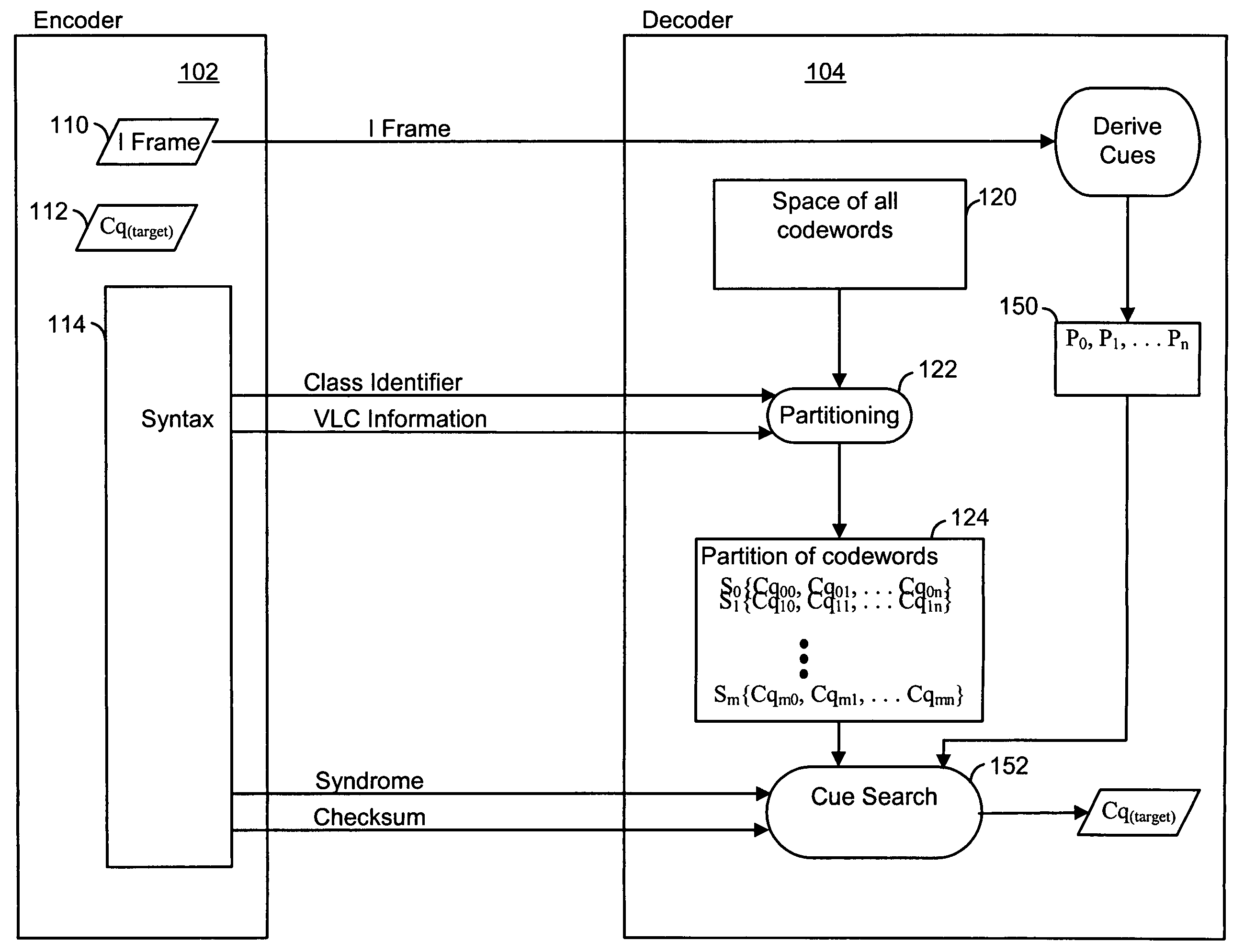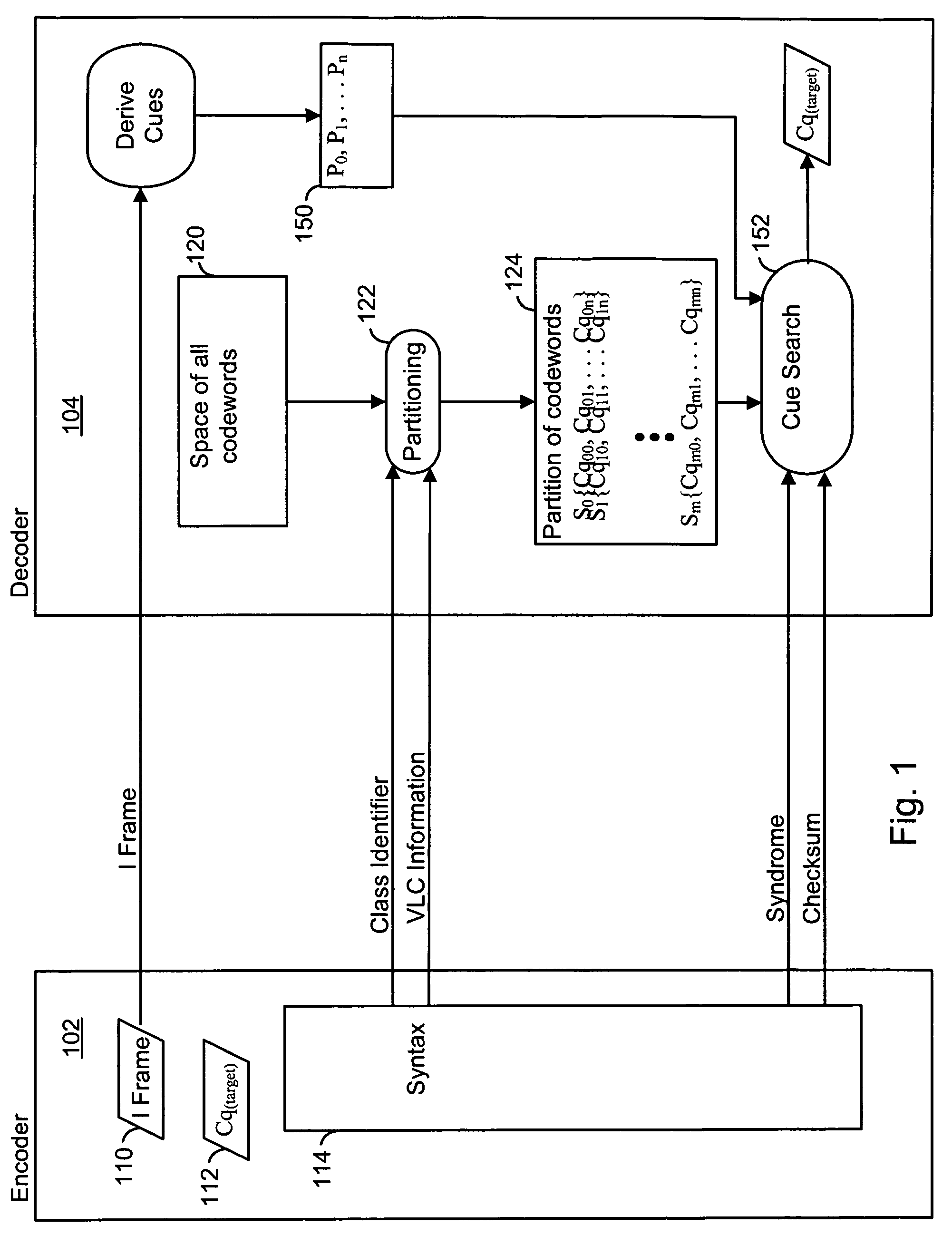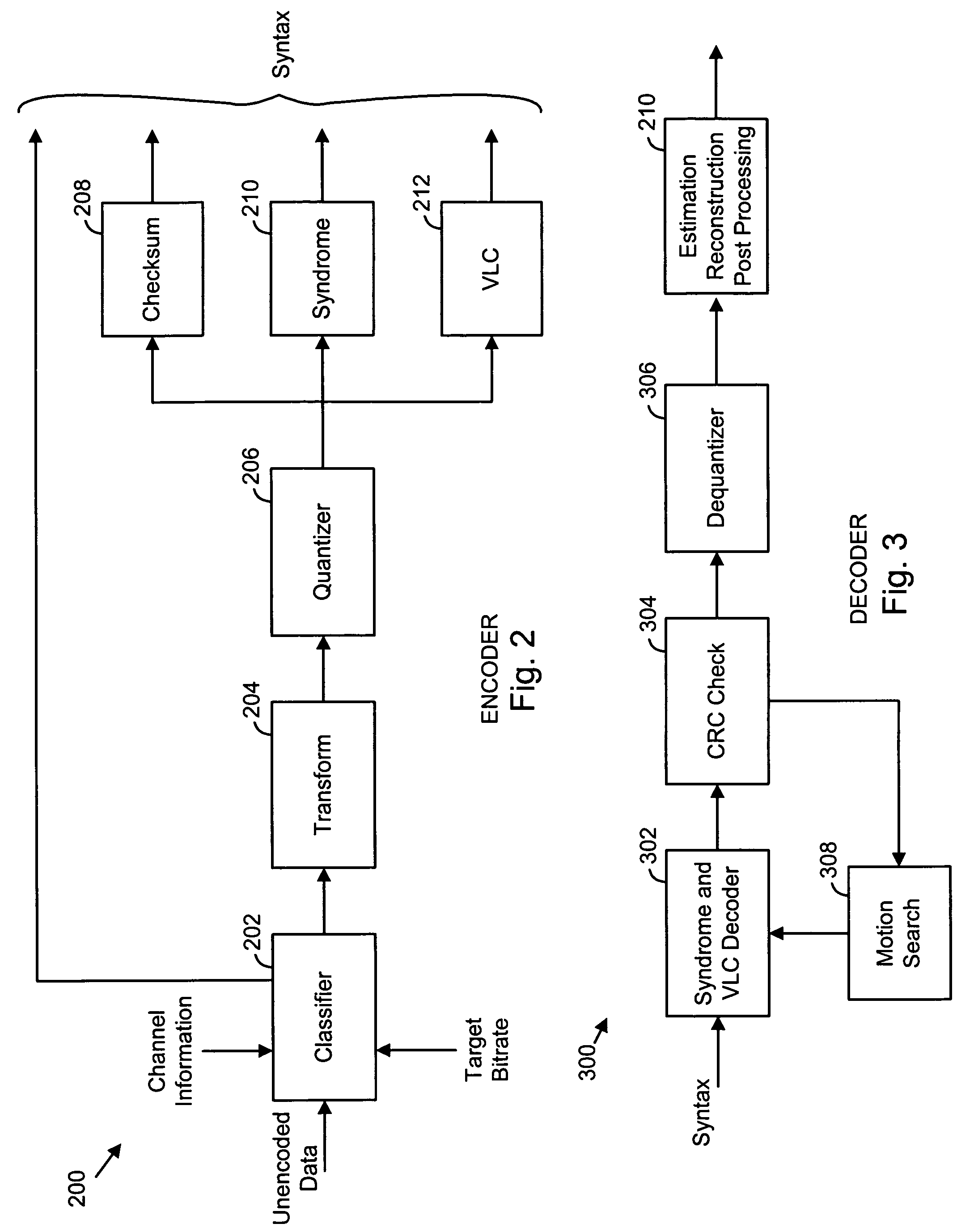Encoding and decoding of digital data using cues derivable at a decoder
a digital data and cue decoding technology, applied in the field of digital information representation, can solve problems such as the reduction of encoder complexity, and achieve the effects of low complexity, robust compression, and high complexity
- Summary
- Abstract
- Description
- Claims
- Application Information
AI Technical Summary
Benefits of technology
Problems solved by technology
Method used
Image
Examples
Embodiment Construction
[0031]A preferred embodiment of the invention is included in a coding scheme referred to as PRISM, a shorthand name derived from “Power-efficient, Robust, high-compression, Syndrome-based, Multimedia coding.” PRISM has been developed and tested by the University of California at Berkeley and is described, for example, in publications such as “PRISM: A New Robust Video Coding Architecture Based on Distributed Compression Principles,” 40th Allerton Conference on Communication, Control and Computing, Allerton, Ill., October 2002. It should be apparent that the specific steps of the PRISM approach and other embodiments detailed herein can be modified and supplemented. Steps can be added to, or taken from, the various embodiments to achieve, for example, design tradeoffs among speed, compression ratio, efficiency, resource use (e.g., processing cycles, memory, bandwidth, etc.), cost and other considerations. Other coding approaches and techniques, including those taught by the prior art ...
PUM
 Login to View More
Login to View More Abstract
Description
Claims
Application Information
 Login to View More
Login to View More - R&D
- Intellectual Property
- Life Sciences
- Materials
- Tech Scout
- Unparalleled Data Quality
- Higher Quality Content
- 60% Fewer Hallucinations
Browse by: Latest US Patents, China's latest patents, Technical Efficacy Thesaurus, Application Domain, Technology Topic, Popular Technical Reports.
© 2025 PatSnap. All rights reserved.Legal|Privacy policy|Modern Slavery Act Transparency Statement|Sitemap|About US| Contact US: help@patsnap.com



